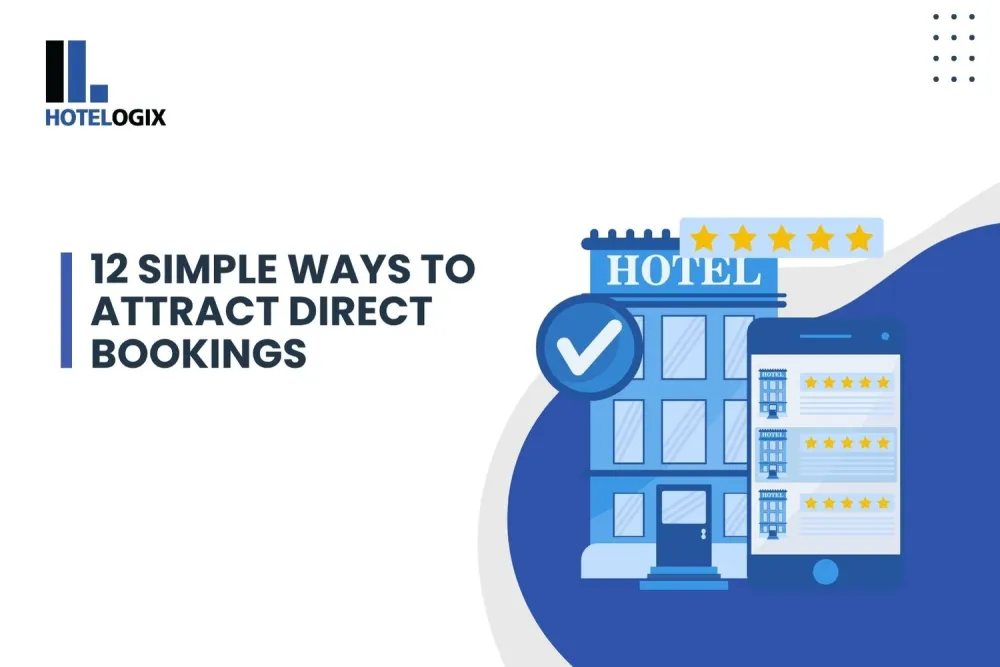The reach of OTAs has risen by 45% since 2008 in spite of the fact that travelers booking directly on the website is cheaper for hoteliers. The irony is that travelers use the same internet to find hotels as they do for OTAs, but the demand for OTAs is high compared to the hotel’s website. Ever thought why?
The answer is simple; it has nothing to do with the travelers or the OTAs, but it’s to do with the hotel website. Yes, you read that right! Try this, look up for a hotel or B&B on Google, what is the first result you will are more likely to see? OTAs like TripAdvisor, Expedia and Booking.com will definitely be listed on the first 4 results. You will hardly find the hotel’s website on the search engines. Only after running through the first few pages of the third party sites, will you find a hotel’s website. And if you are browsing from a mobile device, will the website be compatible with the device?
A research conducted by eDigital indicated that hotels are the weakest performing sector when it comes to e-travel due to hotel websites lacking basic elements like good navigation, design and information.
A website should act as a shop window where a hotel’s amenities and specialities are highlighted to such an extent that the visitor gets lured to book instantly. Having an easy-to-navigate, effective and attractive website wherein everything from rates to rooms to services and packages are clearly highlighted. A good website with all important details and strong booking engine are the key to reclaiming victory over OTAs. You don’t have to necessarily spend a fortune to get a great website. There are multiple new-age tools that let independent hotels build a website into a powerful marketing tool with minimal cost and effort.
Here’s looking at simple fixes to improve your website design:
– Let go of Flash websites: Flash based websites are bygones as they have many disadvantages – Google’s crawlers can’t examine it, organic search is low and SEO ranking drops. Flash websites are incompatible with mobile devices and if Google also stops recognizing them then there will be no chance that your travelers will find you.
– Use Visuals: Pictures speak louder than words, so having a hotel website with high resolution pictures which showcase the facilities, rooms and local attractions will work the best. A great website should have a good design, stunningly written content that adapts well with the SEO strategies and an easy-to-navigate functionality.
– Optimize Information Architecture: Information Architecture is nothing but giving your visitors the right information they are looking for. When a visitor comes to your website, he/she is definitely is looking at the rooms, packages, rates, pictures and local attractions close by. Display high-resolution pictures, share detailed descriptions and information of your property.
– Promote Packages: If you have any special offers or promotions running, make sure to highlight them by creating individual landing pages which talk about the promotions in detail. If you have a booking engine, then highlight the packages along with the booking engine so that they are availed automatically.
– Utilize Maps: Take complete advantage of maps by highlighting all the local attractions, nearby restaurants, malls, shops and other places to see. Provide convenience to your guests by giving out the walking and driving directions. Make your maps more interactive and helpful for the visitors.
– Focus on SEO: SEO is not rocket-science but simply a tool to ensure that your hotel ranks optimally on the search engines. Organize your website appropriately by creating unique content, meta tags and strong keywords that would be looked upon Google by the travelers. Design the content in such a manner that it becomes easy for your guests and Google to crawl it. Another important aspect of SEO is language; having your website in different languages works wonders for your site, especially in the international markets.
– Ensure Mobile Compatibility: Nowadays almost all websites can be viewed on mobile devices but few lack quality due to poor navigation, flash, heavy content and below average web design. Since mobile bookings are on rise, it is advisable to build an easy to navigate mobile website with minimal content, banners and pop-ups. All the websites should be mobile compatible and hotels should provide a strong mobile-compatible booking engine for the visitors.
– Apply Video Strategy: Videos are slated to be the next big thing in the industry. Hotels should focus on having virtual tours of their property. A recent survey conducted by Software Advice, a reviews and research company for hotel industry concluded that:
– When looking for hotels online, 50% of people prefer watching a hotel’s video on the hotel’s website.
– 68% people say they are encouraged to book after watching the hotel’s video that highlights the amenities, services and property.
Hoteliers should follow these simple steps to increase their website visitors in 2015 and convert them into bookers.
Have you tried Hotelogix’s Freemium – Free Forever Cloud PMS yet? View Details Now.





